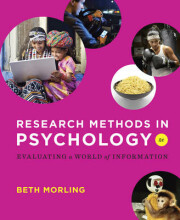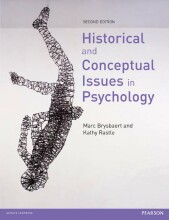Summary: Psychology Of Ai
- This + 400k other summaries
- A unique study and practice tool
- Never study anything twice again
- Get the grades you hope for
- 100% sure, 100% understanding
Read the summary and the most important questions on Psychology of AI
-
1 college 1
This is a preview. There are 23 more flashcards available for chapter 1
Show more cards here -
What is the viewpoint of the mass on creating artificial life?
- Humans have always fantasized of creating sentient creatures themselves
- Golems, Frankenstein’s monster, Pinocchio are archetypical
- The thing-that-lives generates high arousal, either positive (enthusiasm) or negative (anxiety)
-
What is a possible reason that the uncanny valley exists?
- Humans have a natural tendency to avoid disease.
- when robots approach human-likeness, they resemble sick or disabled people more than healthy people.
- when robots are not human-like at all, we don't view them through the same goggles we view humans through.
- this could be the reason why people avoid robots that are almost indistinguishable.
- Humans have a natural tendency to avoid disease.
-
Human beings have a very strong tendency to anthropomorphize, what does this mean?
- they assign human qualities to anything that behaves like a human
- when the robot got bullied you couldn't help to think how sad it must've felt.
- they assign human qualities to anything that behaves like a human
-
What is the very essence of what computers do?
- Computers can be used to "outsource" psychological processes.
- they perform mental processes for the user.
- As such, we extend our mind and make it more powerful
- Our species has gradually extended its mind to a level that was unimaginable for most of history...
- Computers can be used to "outsource" psychological processes.
-
What was the first idea of a machine being able to do intellectual work?
- The mechanical turk; An 18th century apparatus that could play a strong game of chess
- Howeverthis was an illusion: the mechanical clockwork inside hid a dwarf who was actually playing
- But this was the first time anybody had the idea for a machine that could think.
- The mechanical turk; An 18th century apparatus that could play a strong game of chess
-
What was the product of the collaboration of Charles Babbage and Lady Lovelace?
Charles Babbage was the first person to create ananalytical engine that allowed the user to makecalculations .Ada Lovelace is the first person to write aspecification for this machine to cause it togenerate Bernouilli numbers: analgorithm .- These
specifications constitute the firstsoftware program, andLady Lovelace is therefore the firstprogrammer
-
Parallel, but independently, to the fantasy of a digital computer is the rise of the idea of a robot. How did this idea evolve?
- The industrial revolution makes the machine mainstream
- In factories, machines start to take over human tasks•The idea that one could rebuild a human mechanically takes hold
- The idea of a robot (after the Slavic Robota, which means “forced labourer”) is born
-
Describe the contributions of Alan Turing to the development of the computer.
- he was an english mathematician who cracks the Enigma code of the Nazis
- Turing shows how to make a very generic “machine” to do calculations: the Turing Machine
- he never built it, it was only the blueprint for it.
- Proves that such a machine can handle all computable functions
- these computable functions also includes all standard logic: the Turing machine thus can “think” a bit
-
How does the turing machine work?
- It is a machine with a piece of tape.
- the machine reads the tape, can erase what is writen on the tape, or write something on the tape.
- it's a digital machine; it only writes 0's and 1's
- The computer runs a programme, and the programme instructs the machine what to do when a particular piece of tape is read.
- It is a machine with a piece of tape.
-
Describe how the ability of a computer to use logic through boolean algebra is an analogy to human thought.
Logic can be used within thoughts.- logic can also be
translated into acomputation . Our thoughts can therefor be seen ascomputational processes . - the
computations logic istranslated to are implemented in/performed by acomputer . - our thoughts being
computational processes are performed by our brain. - so our brain
functioning isanalogous to acomputer functioning .
- Higher grades + faster learning
- Never study anything twice
- 100% sure, 100% understanding
































